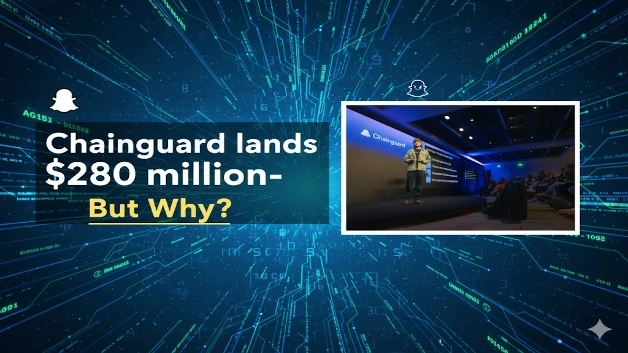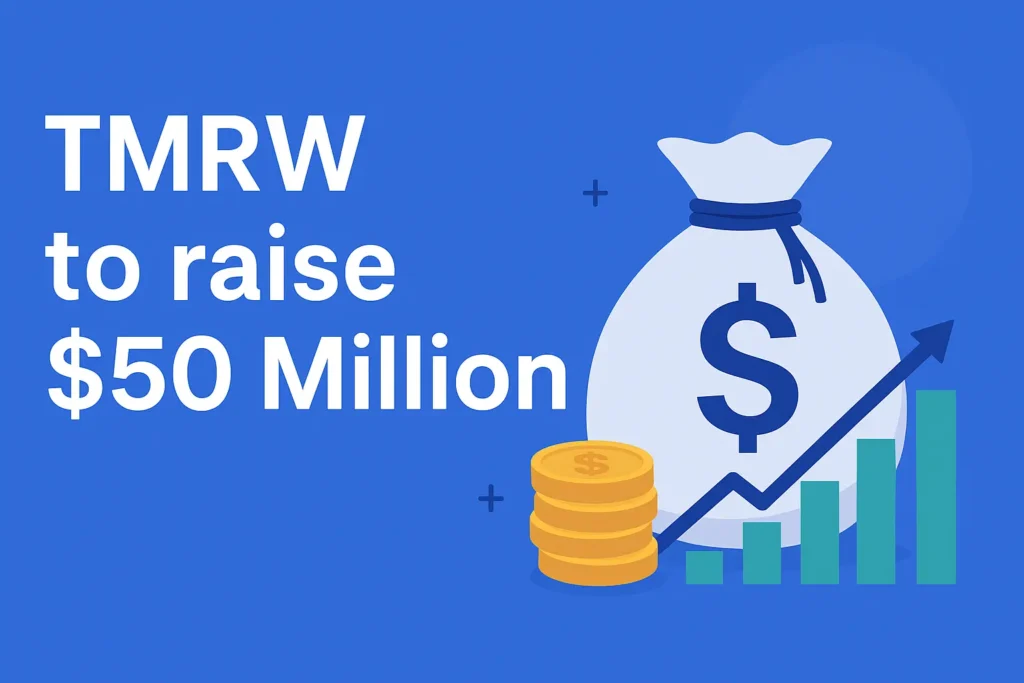Chainguard, the Kirkland-based cybersecurity startup securing open source software supply chains worldwide, has landed $280 million in growth financing from General Catalyst’s Customer Value Fund just six months after raising $356 million in Series D funding. But beyond the prestigious investor lineup bringing total capital secured to $892 million at a $3.5 billion valuation, this funding round raises a crucial question: why is growth capital flooding into software supply chain security when organizations already spend billions on traditional cybersecurity tools, and 90% of enterprise code relies on open source that remains fundamentally vulnerable?
The $10.1 Billion Problem Nobody Could Solve Without Breaking Development
The answer lies in understanding what’s happening beneath the surface of software security economics. Despite the global software supply chain security platforms market valued at $5.53 billion in 2025 projecting explosive growth to $10.10 billion by 2030—representing 12.8% compound annual growth—the sector faces a critical trust gap. Traditional security approaches require extensive vulnerability scanning, manual patching, and reactive threat response, yet open source software constitutes 90% of organizational code today, translating to billions of containers deployed with inherited vulnerabilities that make it a prime target for attackers before development teams can address them.
Chainguard operates a platform unique in the industry: hardened, secure, production-ready builds of open source software requiring no hardware installations, delivering container images with zero known vulnerabilities across 1,700+ modern technology stacks. Founded in 2021 by CEO Dan Lorenc and a team of former Google engineers who developed the open source software supply chain security framework, the company combines AI-powered security verification with physics-based software composition analysis understanding the dynamic behavior of each unique dependency chain.
Since launching operations across enterprise Fortune 500 customers including Anduril, Canva, Fortinet, Hewlett Packard Enterprise, Snap Inc., and Snowflake, Chainguard has demonstrated that software-first security approaches can eliminate vulnerabilities before deployment while accelerating development velocity—solving the fundamental tension between security teams demanding protection and engineering teams requiring speed.
Why Enterprises Couldn’t Build This In-House
Chainguard’s funding trajectory provides context for why organizations increasingly outsource open source security rather than developing proprietary vulnerability management systems. When enterprises face software supply chains where open source powers 90% of their applications, yet traditional scanning tools generate thousands of vulnerability alerts requiring weeks of triage, development velocity collapses under security overhead. The 742% surge in software supply-chain attacks since 2020 has transformed open source from trusted innovation accelerator to critical attack vector, forcing security teams into reactive postures identifying compromised dependencies after deployment rather than preventing vulnerable code from entering production environments.
The funding structure reflects validation from strategic capital rather than dilutive equity: General Catalyst’s Customer Value Fund provides structured growth capital tied directly to customer acquisition and recurring revenue, enabling Chainguard to scale go-to-market investment without diluting ownership. CFO Eyal Bar emphasized this structure “allows our commercial motion to fund its own growth while giving us the flexibility to double down on product and engineering—where our differentiation lies.” This investor approach mirrors enterprise recognition that software security infrastructure requires different capital structures than experimental security products—organizations need vendors demonstrating commercial sustainability rather than venture-funded security tools disappearing after acquisition.
The Zero-Vulnerability Platform Behind $280 Million
The funding round accelerates deployment across enterprises while expanding capabilities in AI-driven security automation, container orchestration integration, and compliance reporting. Managing Director Pranav Singhvi at General Catalyst’s CVF highlighted: “Chainguard is defining a new category at the heart of modern infrastructure: trusted open source software. By solving one of the most pressing challenges in software development and deployment, the company is setting a new standard for engineering teams.”
The timing coincides with software security reaching regulatory inflection points across multiple jurisdictions. The U.S. federal government mandates machine-readable Software Bill of Materials (SBOM) disclosure across procurement contracts, immediately cascading through supply chains as prime contractors demand identical transparency from vendors. Europe’s impending Cyber Resilience Act introduces parallel disclosure requirements, creating trans-Atlantic harmonization multiplying addressable demand. IoT-enabled smart sensors capture 60% of supply chain security demand, yet software analyzing build pipelines and artifact repositories represents the more critical entry point preventing malicious code injection before production deployment.
Why This Matters For Global Software Infrastructure
Chainguard’s $280 million raise positions the company within broader 2025 software security dynamics where infrastructure platforms demonstrate architectural advantages over point security tools:
Infrastructure Economics Transformation: For development organizations, traditional vulnerability scanning requires security teams triaging thousands of alerts, engineering teams backporting patches across complex dependency chains, and operations teams coordinating deployment windows—overhead consuming weeks per major vulnerability. Zero-CVE container images eliminate these workflows while delivering faster implementation—enterprises deploy Chainguard Images without modifying CI/CD pipelines or build processes, reducing security overhead from weeks to minutes while capturing superior protection compared to scanning-based approaches.
Market Maturation Accelerating: Software supply chain security platforms market growing at 12.8% CAGR through 2030 reflects increasing recognition that supply chain attacks constitute the highest-impact threat vector. Cloud-based platforms captured 62.5% of revenue in 2024, while Asia-Pacific is forecast to register 14.2% CAGR through 2030. Yet software providing zero-vulnerability foundations represents more sustainable approach than perpetual vulnerability management—organizations increasingly recognize that preventing vulnerable code from entering environments proves more effective than detecting and remediating after deployment.
Product Expansion Validated: Chainguard’s recent launches include Libraries for JavaScript, Java, and Python—giving organizations confidence that malware has not been inserted during build or distribution—plus availability on Microsoft Azure, AWS, and GCP marketplaces enabling direct procurement within existing workflows. The catalog spans 1,700+ minimal container images covering modern technology stacks, demonstrating that comprehensive open source coverage scales across diverse enterprise environments without requiring per-package customization.
The Answer: Software Infrastructure for Hardware-Free Security
So why $280 million for Chainguard just six months after $356 million? Because the company combines elements growth investors value: proven technology delivering zero-vulnerability open source eliminating primary adoption friction, vendor-agnostic platform enabling rapid enterprise scaling without infrastructure replacement, and strategic timing where 742% surge in supply chain attacks since 2020 creates urgent demand yet traditional scanning-based solutions remain operationally unsustainable for development organizations prioritizing velocity alongside security.
The investment validates that software security infrastructure captures disproportionate value by fundamentally reframing the problem. With fiscal year 2025 seeing annual recurring revenue grow seven times to $40 million, and software supply chain platforms projected reaching $10.10 billion by 2030, Chainguard positions itself as the trusted foundation for open source consumption—analogous to how certificate authorities became trust infrastructure for web communications.
I’m Araib Khan, an author at Startups Union, where I share insights on entrepreneurship, innovation, and business growth. This role helps me enhance my credibility, connect with professionals, and contribute to impactful ideas within the global startup ecosystem.




